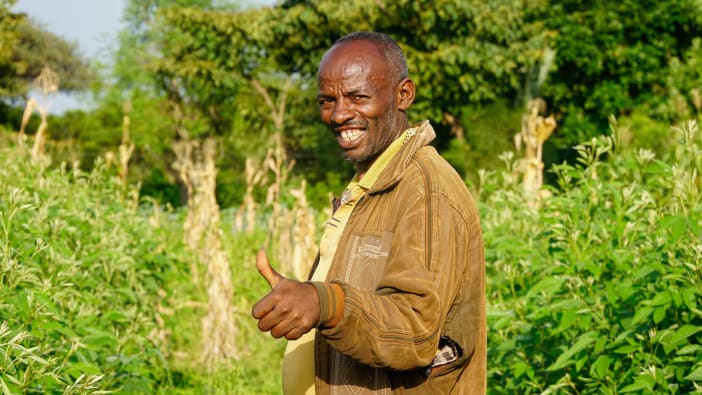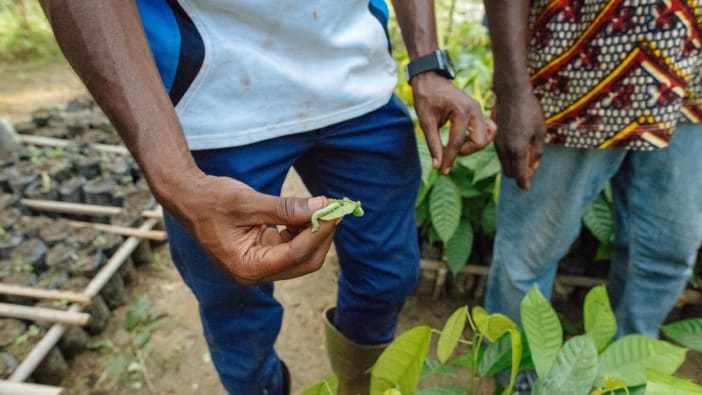by Michael Madany.
When I began doing agroforestry work with communities in Somalia in 1985, I wondered how to solve the problem of transporting tree seedlings. Tree seedlings grown in polyethylene tubes need great care while they are being carried to make sure they are not damaged before planting.
Farmers needed seedlings in the rainy season when transport, even if available, was impossible because of the condition of the roads. Besides, I did not want people to depend on trucks to deliver trees. So I hired a local carpenter to make some wooden boxes which we used for a number of years before they finally rotted and broke apart. The size of these boxes was another disadvantage - they could carry about 30 pots and were too heavy for any normal person to carry any distance.
In 1988 I considered another solution. I bought a number of empty 20 litre tins from the local market which were originally used for vegetable oil. They were not expensive. They were painted to stop rust and rope handles were put on two of the sides. These tins - called biib in the local language - had many advantages...
- They seemed to be much stronger and cheaper than wooden boxes.
- Their size meant that only about 10 trees could be carried.
- This load was not too heavy so people could easily carry them distances of 3-5 km. The size of the tins protected the pots from damage.
- If truck transport was available the tins provided a useful way of organising and carrying seedlings.
- The night before planting the tins were loaded with seedlings. Water was poured on to a level of about 20 cm.
- The excess water was poured off the next morning before the trees were carried from the nursery. This ensured that the trees were planted with sufficient water.
- The tins were also useful in the nursery and demonstration gardens when we were not involved in tree planting. They were used for transporting water and soil.
I am sure that similar tins are available in markets elsewhere in the world and would encourage other groups to be aware of their usefulness.
Michael Madany works with World Concern, Box 61333, Nairobi, Kenya. This article is used with kind permission of Baobab.









